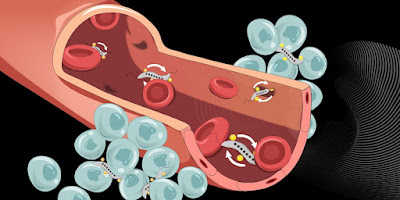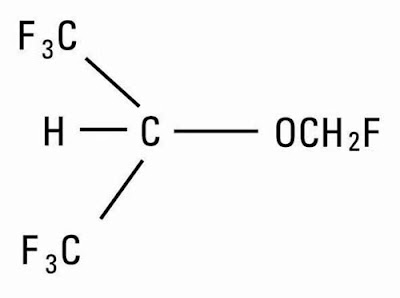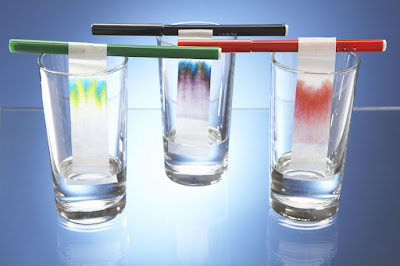Magnetic Driven Drug Delivery Technology: The Future of Targeted Healthcare
 |
| Magnetic Driven Drug Delivery Technology |
With advancements in nanotechnology and material engineering, magnetic drug delivery is emerging as a revolutionary targeted drug delivery approach. This cutting-edge technology utilizes magnetic fields and magnetic nanoparticles to guide therapeutic agents directly to diseased sites in the body, minimizing side effects and maximizing treatment effectiveness. As research progresses, magnetic drug delivery holds enormous potential to transform healthcare and improve patient outcomes for various conditions.
The Rise of Targeted Drug Delivery
Traditionally, drugs are administered systemically, circulating throughout the
body in search of their target. However, most drugs will accumulate
non-specifically in healthy tissues as well, causing unwanted side effects. To
address this issue, scientists have long pursued targeted drug delivery methods
that concentrate therapeutic agents precisely where needed.
Magnetic drug delivery aims to do just that by exploiting the magnetic
properties of nanoparticles. When administered intravenously or locally,
drug-loaded magnetic nanoparticles can be manipulated and guided to diseased
sites using external magnetic fields. This achieves highly focused drug
accumulation while minimizing systemic exposure and side effects. Compared to
other targeted delivery approaches, magnetic targeting offers superior control,
selectivity, and dosage flexibility.
Engineering Magnetic Nanoparticles
The key to Magnetic
Driven Drug Delivery Technology lies in engineering biocompatible and
stable magnetic nanoparticles of the appropriate size, magnetic properties, and
surface chemistry. Commonly used nanoparticles include iron oxide (magnetite
and maghemite) and metal alloys like cobalt-platinum due to their strong
magnetization.
Particle size is a crucial factor - they must be small enough to circulate
freely yet large enough to avoid kidney filtration. Most optimized magnetic
particles range 5-200nm. The nanoparticles also require surface modification to
attach drug molecules, avoid immune recognition, and increase circulation time.
Coatings like dextran, chitosan, silica, and PEG are often employed.
Magnet Design and Implementation
External magnets used for targeting come in various designs based on the
application site. For instance, MRI-guided magnets, rigid magnet arrays, and
electromagnets are commonly used for local tumor targeting. Flexible magnet
applicators are better suited for superficial sites like the skin. In addition
to size and geometry, magnet parameters like field intensity, duration, and
frequency must be optimized for maximum targeting efficiency.
Promising Clinical Applications
With continued research and testing, magnetic drug delivery demonstrates
therapeutic promise across several disease conditions. Here are some notable
applications:
- Cancer Therapy: Targeted delivery of chemotherapy drugs, gene silencing
agents, and thermally activated nanoparticles for localized hyperthermia. This
prevents systemic toxicity while maximizing tumor treatment.
- Pain Management: Localized delivery of analgesic drugs like opioids or
anti-inflammatory agents into joints, spine, and other pain sites increases
drug concentration and reduces adverse effects.
- Inflammatory Conditions: Conditions like arthritis can leverage magnetic
targeting of corticosteroids and immunosuppressants directly to joints and
affected areas to suppress inflammation.
- Central Nervous System Disorders: Though challenging due to the blood-brain
barrier, magnetic targeting may help deliver drugs across the BBB for epilepsy,
brain tumors, and neurodegenerative diseases.
- Wound Healing: Promotes rapid skin/tissue regeneration by guiding growth
factors, antibiotics to injury sites via flexible magnetic applicators. Reduces
healing time.
Clinical trials evaluating magnetic drug delivery for cancer, arthritis, pain
management and wound healing have demonstrated positive results so far
regarding molecular delivery, bioaccumulation, and therapeutic efficacy. Larger
studies will further optimize outcomes.
Unlocking Magnetic Drug Delivery's Full
Potential
While significant progress has been made, certain research gaps need addressing
to unlock the complete potential of this technology. Areas requiring further
investigation include:
- Nanoparticle optimization: Continue tuning particle size, shape, composition
and surface engineering to achieve optimal pharmacokinetic and bioaccumulation
profiles.
- Systems integration: Advance flexible, wearable and implantable magnetic
delivery systems for high level control and clinical usability. Integrate with
theranostic techniques like MRI for monitoring.
- Safety and regulatory evaluation: Long-term safety and systemic effects of
magnetic nanoparticles must be thoroughly studied for regulatory approval of
clinical usage. Develop clear validation guidelines.
- Multi-modal integration: Combining magnetic targeting with ultrasound, light
or temperature modulation may offer additive or synergistic therapeutic
effects.
With continued multidisciplinary research, magnetic drug delivery is poised to
revolutionize disease management. It could help maximize treatment response
while minimizing harm - transforming safety, efficacy and outcomes across many
areas of medicine. Exciting advances are still on the horizon for this
promising targeted drug delivery approach.
Get More Insights on Magnetic Driven Drug Delivery Technology



Comments
Post a Comment